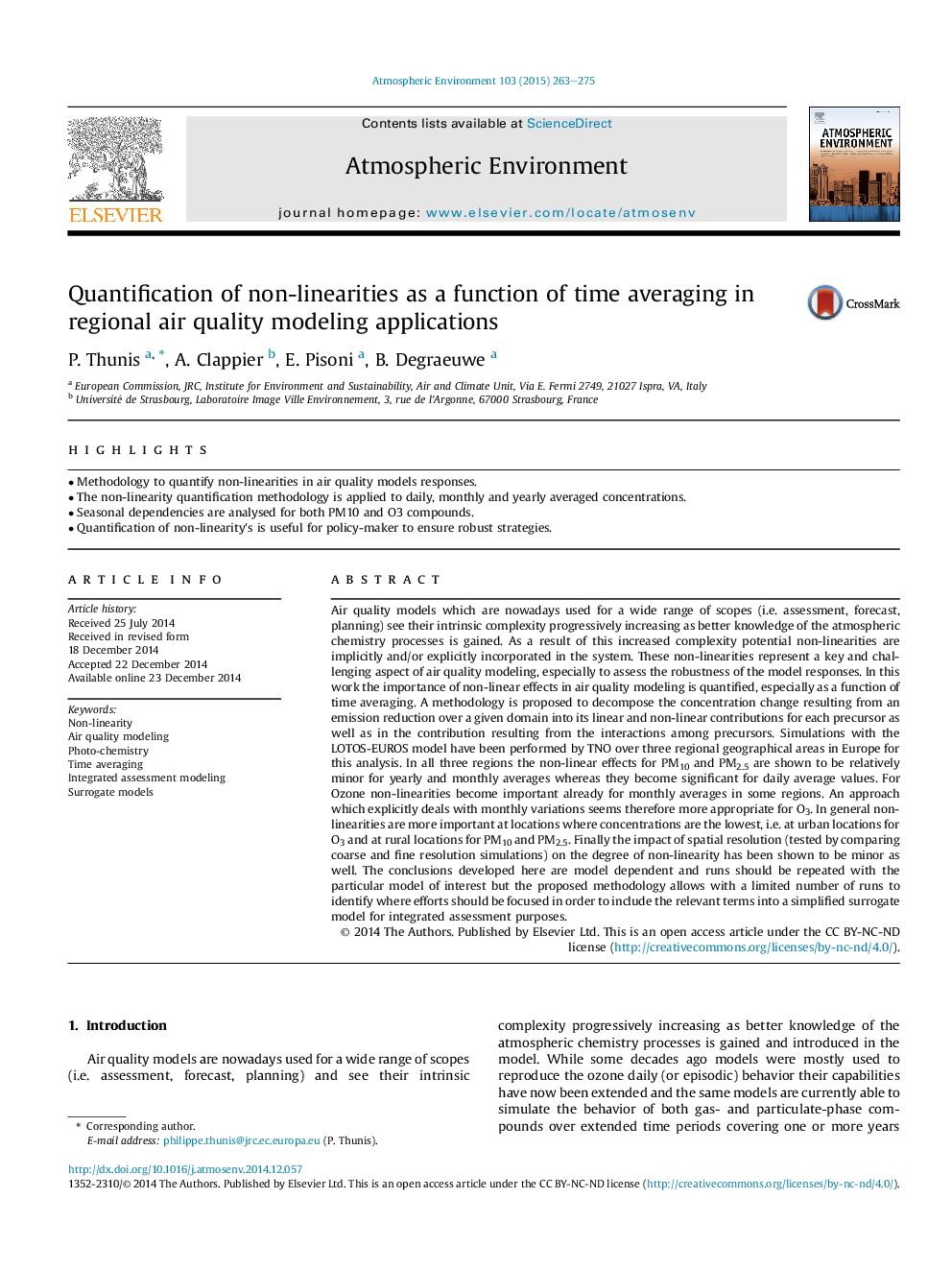| کد مقاله | کد نشریه | سال انتشار | مقاله انگلیسی | نسخه تمام متن |
|---|---|---|---|---|
| 6338533 | 1620368 | 2015 | 13 صفحه PDF | دانلود رایگان |

- Methodology to quantify non-linearities in air quality models responses.
- The non-linearity quantification methodology is applied to daily, monthly and yearly averaged concentrations.
- Seasonal dependencies are analysed for both PM10 and O3 compounds.
- Quantification of non-linearity's is useful for policy-maker to ensure robust strategies.
Air quality models which are nowadays used for a wide range of scopes (i.e. assessment, forecast, planning) see their intrinsic complexity progressively increasing as better knowledge of the atmospheric chemistry processes is gained. As a result of this increased complexity potential non-linearities are implicitly and/or explicitly incorporated in the system. These non-linearities represent a key and challenging aspect of air quality modeling, especially to assess the robustness of the model responses. In this work the importance of non-linear effects in air quality modeling is quantified, especially as a function of time averaging. A methodology is proposed to decompose the concentration change resulting from an emission reduction over a given domain into its linear and non-linear contributions for each precursor as well as in the contribution resulting from the interactions among precursors. Simulations with the LOTOS-EUROS model have been performed by TNO over three regional geographical areas in Europe for this analysis. In all three regions the non-linear effects for PM10 and PM2.5 are shown to be relatively minor for yearly and monthly averages whereas they become significant for daily average values. For Ozone non-linearities become important already for monthly averages in some regions. An approach which explicitly deals with monthly variations seems therefore more appropriate for O3. In general non-linearities are more important at locations where concentrations are the lowest, i.e. at urban locations for O3 and at rural locations for PM10 and PM2.5. Finally the impact of spatial resolution (tested by comparing coarse and fine resolution simulations) on the degree of non-linearity has been shown to be minor as well. The conclusions developed here are model dependent and runs should be repeated with the particular model of interest but the proposed methodology allows with a limited number of runs to identify where efforts should be focused in order to include the relevant terms into a simplified surrogate model for integrated assessment purposes.
Journal: Atmospheric Environment - Volume 103, February 2015, Pages 263-275